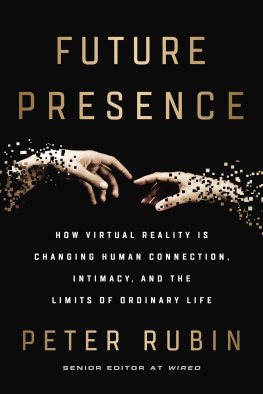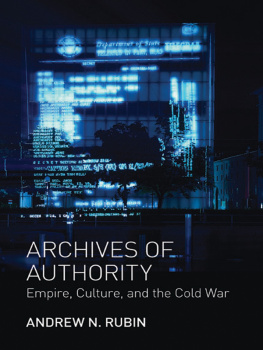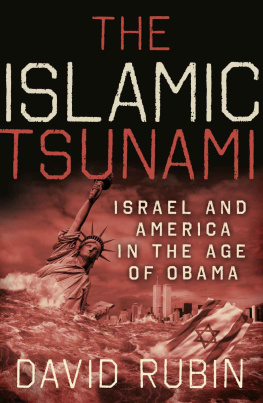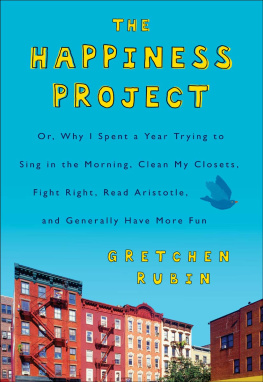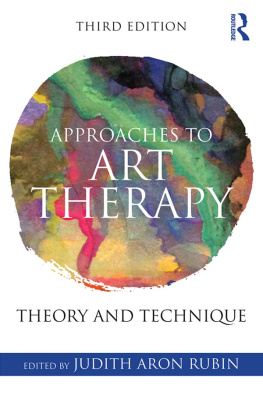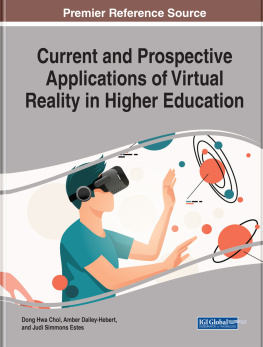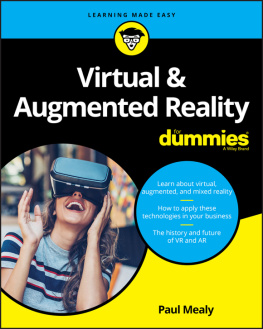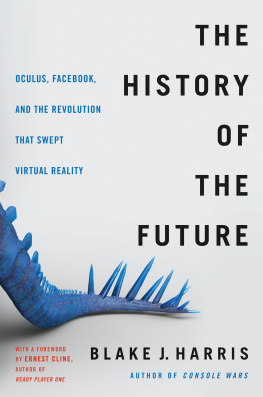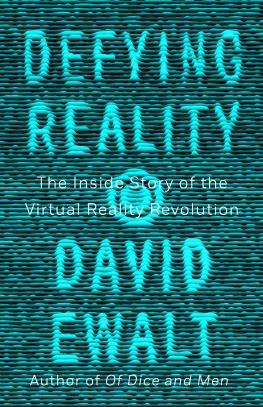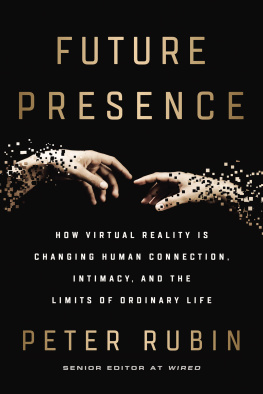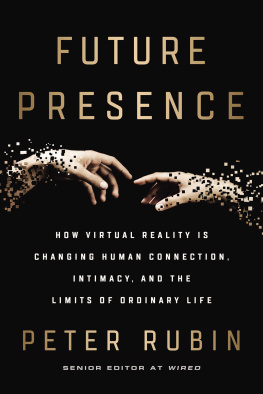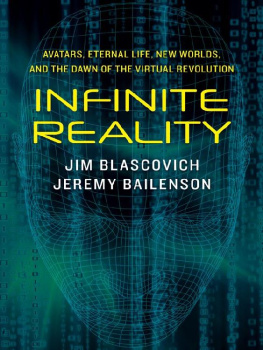Fun fact: the acknowledgments section is my favorite part of any book. Some are dry, some are disarming, some are pompousokay, a lot are pompousbut they make a book feel alive, like some sort of complex organism that only exists thanks to this magical concert of disparate relationships.
Writing one, though? Not as easy as youd think. For one, I have no idea how far back Im supposed to go. Obviously, any chance I had at stringing together this many words in a row starts with my parents. Being the kid of a research librarian (mom) and a college professor (dad) means that I grew up in a house where books and ideas and words matteredwordplay too, thankfullyand while I absolutely despised writing until sometime in my late teens, theres not a chance that I would have considered it without them.
But after that, where do I go? The teachers who valued critical thought over rote curricula? Sally Harvey, Bob Courtney, Carla Gardner, Greg Mongold, Craig Wilder, Phyllis Garland? Sam Freedman, who finally told me to stop using so many words and just write? (And who also did me the favor of telling me I wasnt ready for his book-writing course in grad schoolbecause that would have been a disaster for everyone involved.)
And once I actually figured out I wanted to write, who then? The writers and editors at Art Coopers early-00s GQ, where I learned from a murderers row of incredible talents? Devin Friedman, Brandon Holley, Adam Sachs, Lucy Kaylin, Andrew Corsello, Chris Raymond, Jim Nelson, Adam Rapoport, Michael Hainey, Marty Beiser, Mark Healyeven writing those names out makes me feel like a twenty-four-year-old freelance fact-checker again, but every word I wrote there was at its root emulation, trying to mimic my way into some umbral approximation of their work.
Later, at Complex, I got the chance to learn all over again, working alongside people who became family as we weathered the upheaval of a recession and learned how to pivot: Noah Callahan-Bever, Donnie Kwak, Justin Monroe, Anoma Ya Whittaker, Tim Leong, Jack Erwin, Damien Scott, Joe La Puma, Bradley Carbone, Mary H. K. Choi.
And at WIRED, where after my first week I said the same thing everyone says there after their first week (holy shit, this is the smartest group of people Ive ever been around), I learned not just how to be a better magazine editor and writer, but a better storyteller in all capacities. There are way, way too many people there to thank after more than six years there, but Ill try to limit it to the people that Ive worked with on VR-related stuff: Scott Dadich, Rob Capps, Jason Tanz, Caitlin Roper, Jason Kehe, Angela Watercutter, Sarah Fallon, Jon Eilenberg, Adam Rogers. Thats just a start, though; there are so, so many other incredible editors and writers Im lucky to call not just colleagues but friends. And to the research, copy, design, photography, production, social, video, and every other department, past and present: youre all amazing. I wish I could thank you all by name.
(Side note: Man, this really is hard. Whats taking me so long?)
Formative experiences aside, this book wouldnt exist without my inimitable editor Hilary Lawson, who not only emailed me out of the blue because shed read an essay Id written and thought that I might have a book in me, but who managed to keep me sane while I took way too much time writing this book. (But the longer I wait, the more stuff happens! I told her no fewer than three times over coffee, while she managed to make her patient grimace look like a smile.) To the unflappable champions at HarperOne who made this book better in innumerable waysSydney Rogers, Lisa Zuniga, Jessie Dolch, Ann Edwards, Melinda Mullin, Courtney Nobile, and everyone elsethank you. And Tiffany Kelly, who managed to fact-check this book in record time: Im still looking for a third confirmation of how to spell gratitude, but believe me, youve got mine.
Thank you, Scrivener, for being an amazing writing tool that somehow harnessed a zillion interview transcripts, research PDFs, pages of handwritten notes, and assorted disjointed ramblings into something resembling coherence. Thank you to everyone in the VR world who was willing to share their expertise and genius with me, both on and off the record. Thank you to the usersthe passionate, curious, invested early adopters who support VRs promise not just with their purchasing dollars but with their hearts and minds. The future of presence has you to thank.
But most of all, I wouldnt have a future without my wife, partner, and best friendso thank you, Kelli. Thank you for believing in me, thank you for trusting me, and thank you for talking me off the writer-anxiety ledge more times than I can count. Sitting here on the couch writing this right now, Ive got you on one side and a tiny sleeping panda-bat-looking dog on the other (hi, Crosby!). Life outside the headset really couldnt be any better.
Wait, though; theres still one left. So thank you, dear person who read all the way to this point without throwing the book away. There wouldnt be an acknowledgments section without you. Ill see you in the Metaverse, I hope.
N OW THAT WE HAVE introductions out of the way, and judging by the fact that youre reading a book about VR, Im going to go ahead and assume youre a fantastically curious and sophisticated person. Maybe you subscribe to the New York Timesthe print edition!and one Sunday a Google Cardboard showed up packed in with your paper. Maybe you bought a Samsung smartphone and they threw a Gear VR headset in with your purchase, and you took a look at some of the 360-degree videos and games that were bundled along with it. Maybe your son or aunt or friend or someone sitting next to you on a plane insisted that you try their headset. Maybe you were already a die-hard gamer and youd already priced out and built your own monster of a desktop PC so that you could use it with the HTC Vive youd preordered. The point is, regardless of when it was, or what exactly you did with it, the idea of virtual reality is at least familiar to you.
But also regardless of when it was or what exactly you did with it the first time you experienced VR, it likely wasnt the first time youd heard of it. We as a society had already had a fling or two with the concept. So while the rest of this book is going to get into where were going, lets take a second and look back at how we got here.
A BRIEF HISTORY OF REALITY (THE VIRTUAL KIND)
When Ivan Sutherland was a student at MIT in the early 1960s, he created a computer design program, Sketchpad, that allowed people to use a special pen to draw on a computer screen. That might not seem special in the age of iPads, but in 1963 it was beyond mind-blowing; before Sketchpad, computer graphics simply didnt exist. In fact, the only way to interact with a computer back then was to feed it punch cards like the worlds most insatiable parking-garage payment stationso being able to create shapes on a computer screen simply by drawing them was tantamount to magic.
But Sketchpad wasnt Sutherlands greatest trick. A few years later, as a professor in Utah, he invented a device called the Sword of Damocles. Scratch thatdevice makes it sound like something you can hold in your hand. This was a complicated and unwieldy set of goggles, suspended from the ceiling like their namesake. In order to use it, you needed to step up to the goggles and allow your head to be tethered to them. (So far, so medieval.) When you looked into the binoculars, you saw two rudimentary computer screens displaying a transparent cube. If you moved your head, the goggles moved along with youthanks to that handy tetherand the images on the screens changed so that your perspective appeared to change as well. Fifty years ago, the Sword of Damocles became what we now think of as the very first VR headset. It didnt exactly

